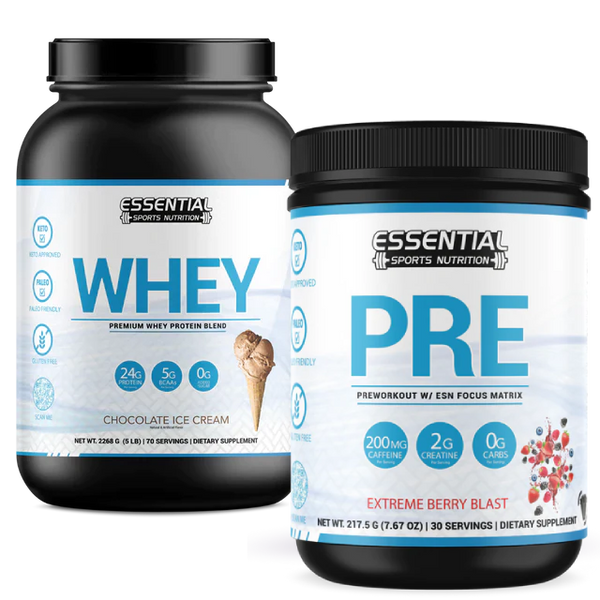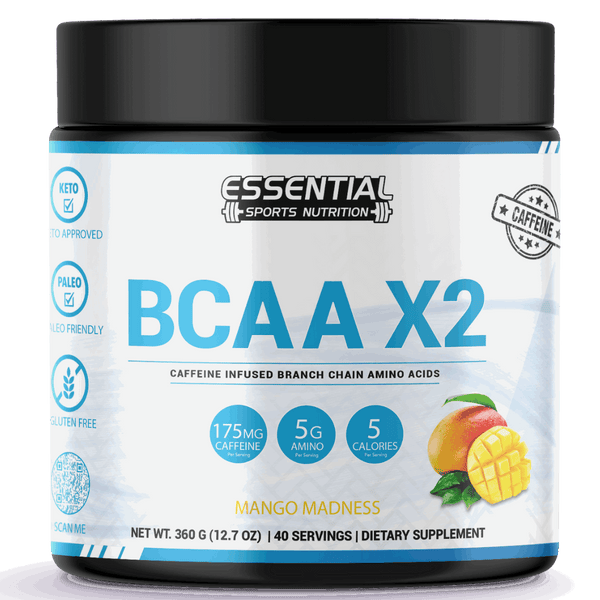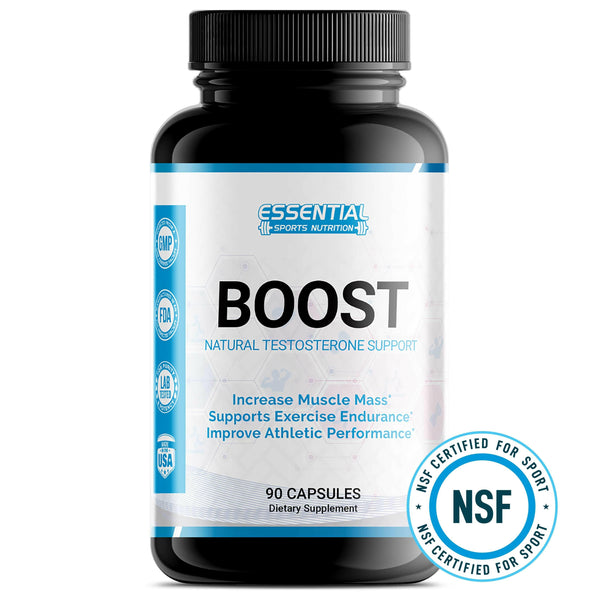Sumo vs Conventional Deadlift: Which Fits Your Workout Routine?
When deciding between Sumo and Conventional deadlifts, choose based on your body mechanics and target muscles. Sumo emphasizes quads, glutes, and hamstrings, with wider stance and inner hand position. Conventional works glutes, hamstrings, and lower back, with hip-width stance and outer hand placement. Tailor your choice to meet your fitness objectives. Sumo boosts quad engagement, while Conventional targets spinal erectors more. Both have distinct advantages, so pick the one best suited to your needs and goals. Mastering the form for each type will enhance your strength training routine effectively.

Key Takeaways
- Sumo deadlifts target quads, glutes, and hamstrings.
- Conventional deadlifts focus on the glutes, hamstrings, and lower back.
- Consider body proportions for optimal deadlift choice.
- Sumo reduces lower back stress and enhances quad activation.
- Conventional builds posterior chain strength and suits strongman competitions.
Key Differences Between Sumo and Conventional Deadlifts
One notable distinction between Sumo and Conventional deadlifts is their stance and hand positioning. Sumo deadlifts feature a wider stance with the hands positioned inside the legs, targeting the quads, glutes, and hamstrings. On the other hand, Conventional deadlifts involve a hip-width stance with the hands placed outside the legs, focusing more on the glutes, hamstrings, and lower back. The choice between the two variations depends on individual body mechanics and muscle engagement preferences. Sumo deadlifts tend to recruit more quads and glutes, making them suitable for individuals with long limbs and a short torso as they reduce strain on the lower back. Conversely, Conventional deadlifts activate the hamstrings and lower back muscles more, making them favorable for those with a long torso and short legs. Understanding these key differences can help you select the deadlift variation that aligns best with your body type and fitness goals.
Muscles Targeted in Sumo Vs. Conventional Deadlifts

Sumo deadlifts primarily target the quads, glutes, and hamstrings, while conventional deadlifts focus on the glutes, hamstrings, and lower back. Understanding the muscle emphasis in each lift can help you effectively tailor your training to target specific areas for strength and development. The differences in muscle activation between sumo and conventional deadlifts can offer distinct advantages based on your fitness goals.
Key Muscle Differences
The key muscle differences between conventional and sumo deadlifts lie in their targeted muscle groups. Sumo deadlifts primarily focus on the quads, glutes, and hamstrings, engaging these muscles more than conventional deadlifts. On the other hand, conventional deadlifts place a greater emphasis on the glutes, hamstrings, and lower back muscles. Sumo deadlifts recruit the quad and glute muscles to a higher degree than conventional deadlifts, while conventional deadlifts activate the hamstrings and lower back muscles more intensely than sumo deadlifts. Understanding these differences in muscle recruitment is essential as it helps tailor the choice between sumo and conventional deadlifts based on individual training goals and preferences.
Activation Comparison in Deadlifts
Comparing the activation of specific muscle groups in conventional and sumo deadlift reveals distinct differences in targeted areas. Sumo deadlifts place a greater emphasis on the quads, while conventional deadlifts target the spinal erectors more intensely, especially off the floor. Electromyography (EMG) readings consistently show higher quad activation in sumo deadlifts than their conventional counterparts. On the other hand, conventional deadlifts engage the hamstrings and glutes to a higher degree than sumo deadlifts. Sumo deadlifts primarily work the hip adductors and quads, whereas conventional deadlifts focus more on the hamstrings and lower back. The following table summarizes the key differences in muscle activation between sumo and conventional deadlifts:
| Muscle Group | Sumo Deadlifts | Conventional Deadlifts |
|---|---|---|
| Quads | Emphasized | Less Emphasized |
| Spinal Erectors | Less Emphasized | Emphasized |
| Hamstrings | Less Emphasized | Emphasized |
| Glutes | Less Emphasized | Emphasized |
Sumo Vs. Conventional Advantages
When considering the advantages of sumo and conventional deadlifts in targeting specific muscle groups, it becomes evident that each variation offers distinct benefits for strengthening various areas of the body. Sumo deadlifts primarily target the quads, glutes, and hamstrings more than conventional deadlifts. The wider stance in sumo deadlifts allows for increased activation in the quads and glutes. On the other hand, conventional deadlifts focus more on glutes, hamstrings, and lower back activation. This variation emphasizes strengthening the hamstrings and lower back muscles. Depending on your goals and individual biomechanics, choosing between sumo and conventional deadlifts can help you tailor your training to target specific muscle groups effectively.
Proper Technique for Sumo Deadlifts
When performing sumo deadlifts, your foot placement should be wide, with toes pointed outward to effectively engage the adductors. Make sure your grip is shoulder-width apart, inside the knees, to maintain a stable position throughout the lift. Remember to keep your back flat and core engaged, and drive through the heels to lock out the hips and shoulders for the best execution.
Stance for Sumo
For peak performance in Sumo deadlifts, positioning your feet wide with toes angled outward is essential to reducing the range of motion needed while targeting specific muscle groups effectively. The wider stance characteristic of the Sumo deadlift helps in shortening the distance the barbell needs to travel, enabling you to lift heavier weights. You can achieve a narrower grip on the barbell by placing your hands inside your legs, enhancing stability and control throughout the lift. Engaging your core, maintaining a flat back, and pushing through your heels are key components of a proper Sumo stance. This stance places a significant emphasis on activating the legs and hips, particularly engaging the quadriceps, glutes, and adductor muscles to execute the lift efficiently.
Hip and Chest
To optimize your performance and minimize injury risk in Sumo deadlifts, focus on maintaining proper hip and chest positioning throughout the lift. In sumo deadlifts, start with your hips higher than in conventional deadlifts to allow for a wider stance. Keep your chest upright and shoulders retracted, and engage your lats by pulling the bar close to your body. This positioning helps with stability and power transfer, reducing the risk of injury. Maintain a strong core by bracing your abs, aiding in efficient hip and chest movement. Here is a table to highlight the key points:
| Key Points | Details |
|---|---|
| Hips Position | Start higher than in conventional deadlifts |
| Chest Position | Keep upright with shoulders retracted |
| Lats Engagement | Pull the bar close for stability |
| Core Strength Importance | Brace abs for efficient movement |
Leg Drive
Maintain a wide stance with toes pointed out to optimize leg drive and maximize hip engagement in Sumo deadlifts.
- Leg drive in sumo deadlifts focuses on pushing through the heels to engage the quads, glutes, and adductors effectively.
- Proper technique involves maintaining a wide stance with toes pointed out to maximize leg drive and hip engagement.
- The leg drive in sumo deadlifts is vital for generating power and lifting heavier weights efficiently.
Proper Technique for Conventional Deadlifts
Achieving proper alignment plays a pivotal role in mastering the technique of conventional deadlifts. Position your feet hip-width apart with toes facing forward to guarantee ideal stability. When setting up, ensure your shins touch the bar, maintaining a straight line from your hips to the ground. Your hands should grip the bar slightly wider than shoulder-width apart, allowing for a strong and secure hold. Throughout the lift, focus on keeping a flat back and engaging your core muscles to protect your spine and maintain correct form.
As you initiate the lift, drive through your heels, emphasizing using your posterior chain. Concentrate on extending your hips and locking out your shoulders at the top of the movement. This sequence ensures proper muscle engagement and reduces the risk of injury. By following these key points and practicing consistently, you can enhance your strength and technique in the conventional deadlift, maximizing your performance and minimizing the chance of errors.
Benefits of Sumo Deadlifts

Sumo deadlifts offer distinct advantages compared to conventional deadlifts, targeting specific muscle groups and reducing strain on the lower back. When considering the benefits of Sumo Deadlifts, you can expect:
- Effective targeting of the quads, glutes, and hamstrings leads to overall lower body strength.
- Reduced stress on the lower back, making it an important option for individuals with lower back issues.
- Improved athletic performance as sumo deadlifts engage multiple muscle groups simultaneously.
Engaging in sumo deadlifts not only helps in developing lower body strength but also aids in enhancing grip strength, which is essential for various lifting exercises. The wide stance and grip placement in sumo deadlifts also benefit the upper back muscles, making it a thorough exercise for overall strength development. Whether you want to strengthen specific muscle groups or reduce strain on your lower back, sumo deadlifts can be a valuable addition to your workout routine.
Benefits of Conventional Deadlifts

Conventional deadlifts are renowned for their targeted focus on the hamstrings, glutes, lower back, and upper back muscles, making them essential for overall strength development. Conventional deadlifts effectively build strength in the posterior chain by honing in on these muscle groups, enhancing power output. This exercise is a favorite in strongman competitions because it emphasizes the lower back, a critical area for strength athletes. Additionally, performing conventional deadlifts can greatly improve grip strength and overall stability during heavy lifts, contributing to a well-rounded strength training regimen. To execute a conventional deadlift correctly, it is important to master the hip hinge movement, maintain a neutral spine position, and keep the barbell close to your body throughout the lift. Embracing the nuances of proper form ensures optimal muscle engagement and reduces the risk of injury, allowing you to reap the full benefits of this classic strength-building exercise.
Choosing Between Sumo and Conventional Deadlifts

When deciding between the sumo and conventional deadlift variations, what key factors should you consider to optimize your strength training routine efficiently? Both sumo and conventional deadlifts offer unique benefits depending on individual characteristics and goals. Here are three pivotal points to help you make an informed choice:
- Body Proportions: Consider your body proportions, as sumo deadlifts are more favorable for individuals with long legs and a short torso, while conventional deadlifts suit those with a long torso and short legs.
- Injury Consideration: If you are a beginner or have joint issues, starting with sumo deadlifts might be beneficial due to their reduced strain on the lower back.
- Targeted Muscle Groups: Conventional deadlifts are excellent for targeting the hamstrings and lower back, making them ideal for building strength in those areas.
Conclusion

To summarize, consider your strengths and goals when deciding between sumo and conventional deadlifts. Sumo deadlifts target the inner thighs and may benefit lifters with hip mobility issues. Conventional deadlifts target the lower back and hamstrings, emphasizing overall strength. Both variations offer unique benefits, so incorporating both into your routine can provide a well-rounded approach to strength training. Remember, variety is the spice of life when it comes to deadlifts.
Difference between the Sumo Deadlift and Conventional Deadlift FAQs
Q: What is the difference between sumo and conventional deadlift?
A: Sumo and conventional deadlifts refer to two different styles of lifting a barbell off the ground. The main difference lies in the positioning of the feet and hands, as well as the stance width.
Q: Which muscles are worked in sumo and conventional deadlifts?
A: Both sumo and conventional deadlifts primarily target the posterior chain muscles, such as the hamstrings, glutes, and lower back. However, the emphasis on specific muscles may vary slightly depending on the style.
Q: Is one deadlift variation better for building muscle mass than the other?
A: Both sumo and conventional deadlifts are effective for building muscle mass. However, some individuals may find that one style suits their body mechanics and goals better than the other.
Q: Can I lift more weight with a sumo or conventional deadlift?
A: People's ability to lift more weight in either the sumo or conventional deadlift can vary. Some may find they are stronger in one style due to factors like leverage and biomechanics.
Q: What are the drawbacks of the conventional deadlift?
A: The conventional deadlift's drawbacks may include a potentially greater risk of lower back strain due to its longer range of motion and more upright torso position compared to the sumo deadlift.
Q: How does the trap bar deadlift compare to sumo and conventional deadlifts?
A: The trap bar deadlift is another variation that places less stress on the lower back than sumo and conventional deadlifts. It also allows for a more upright starting position.
Q: What does an electromyographic analysis of sumo and conventional deadlift indicate?
A: Electromyographic analysis of the sumo and conventional deadlift styles shows differences in muscle activation patterns, particularly in the activation of the quadriceps and adductor muscles.
Q: What Is Better, Sumo or Conventional Deadlift?
A: When deciding between sumo or conventional deadlifts, consider your biomechanics, training goals, and preferences. Your choice should align with what targets your muscle groups effectively and works best for your body mechanics.
Q: Are Sumo Deadlifts Better for Your Back?
A: Sumo deadlifts can be advantageous for your back due to the reduced strain on your lower back compared to conventional deadlifts. The wider stance and engagement of quads in the sumo style may lessen lower back stress.
Q: Why Do Powerlifters Use Sumo Deadlifts?
A: Powerlifters opt for sumo deadlifts to capitalize on leg and hip strength. The wider stance grants leverage, aiding those with specific body strengths. Sumo deadlifts strategically enhance performance and overall strength for powerlifters.
Q: What Are the Benefits of a Sumo Deadlift?
A: When you perform a sumo deadlift, you engage your quads, glutes, and hamstrings effectively. This lift can enhance hip mobility, boost lower body strength, and potentially allow you to lift heavier weights. It may suit your body proportions or help with lower back issues.























